Going against the current, if you don't advance, you will retreat.
—— "Zengguang Xianwen"
The end of the 19th century to the beginning of the 20th century was the first golden age of electric vehicle development, reaching its peak in 1912, when the number of electric vehicles in the United States reached 30,000. Unfortunately, the good times did not last long, and electric vehicles were quickly defeated in the competition with internal combustion engine vehicles. By 1935, they had completely declined, and a long dark night that lasted for more than ten years began.
Since Drake drilled the first oil well on August 27, 1859, in a place called Oil Creek near Titusville in northwestern Pennsylvania, the United States, California, Midland and Texas have successively discovered abundant oil Oil and gas resources, and the number of drilling rigs are also rising.
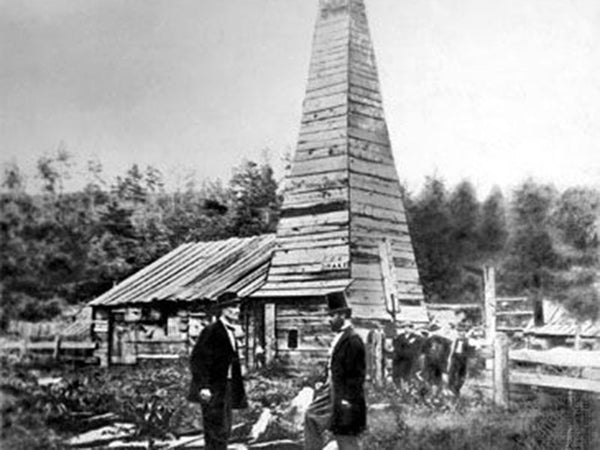
Pictured: The first commercial oil well in the United States
On January 10, 1870, Rockefeller joined with four other shareholders to form the Standard Oil Company, the largest oil refining company in the United States at the time. In 1882, Rockefeller created the Petroleum Trust under the guidance of the "trust" theory, which monopolized 80% of the oil refining industry and 90% of the oil pipeline business in the United States. The establishment of Standard Oil Company made the turbulent oil price relatively stable, and the oil industry changed from "an adventurer's industry to a systematically organized industry".
Trust is literally translated as business trust (business trust, which originally means custody of property ownership), which is one of the advanced forms of monopoly organization, which is composed of many enterprises producing similar goods or the merger of closely related enterprises. The trust organization aims to monopolize the sales market, compete for the origin of raw materials and invest in the country, strengthen the competitiveness, and obtain high monopoly profits. Enterprises participating in the trust lose their independence in production, business and law. The board of directors of the trust manages all production, sales and financial activities in a unified manner, and the leadership is in the hands of the largest capitalists. The original business owner becomes a shareholder and receives dividends based on his shares.
Because the production areas of crude oil are in remote areas with poor transportation, it is necessary to use horse-drawn carts to transport crude oil. The coachmen monopolized the transportation of crude oil, resulting in the transportation price at that time being nearly 10 times the price of crude oil. Oil producer Sekel connected wrought iron pipes with bolts, and laid the first 8-kilometer-long oil pipeline from Pithole City to Miller Farm Railway Station, delivering oil every day. The volume can reach 800 barrels. Subsequently, oil pipelines were widely laid. All in all, rising oil production and the laying of pipelines have kept gasoline prices down and gasoline more readily available.
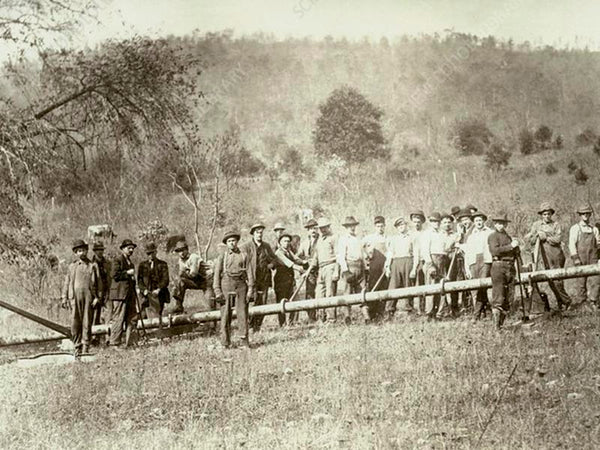
Pictured: U.S. workers build early oil pipelines
In the late 19th century, fueling a car was no easy task. Until 1905, the original gas stations were run only by those refined oil retailers, stocking large cans of gasoline in some grocery stores, carriage stores, and even hardware stores to refuel gasoline cars. In this year, the advent of the manual refueling machine marked the beginning of the history of the gas station. In 1907, Standard Oil of California (the predecessor of Chevron) established the first gas station in the modern sense in Seattle, USA. At that time, the gas station was very small, with only a manual refueling machine and a pipeline and oil tank. Around 1910, a new type of gas station appeared, which consisted of underground oil tanks, oil pumps, pipelines and fuel dispensers, making it easier and easier to refuel gasoline vehicles. In 1913, the Gulf Oil Company established the world's first drive-through gas station in Pittsburgh, USA, which was the prototype of the modern automobile gas station. Since 1920, major oil companies have begun to build gas station networks on a large scale, and accelerated the standardization process of gas stations, designing standardized station rooms, brand logos, fueling equipment and customer service specifications.
While the gas station is booming, some advanced automobile theories and technologies have been gradually promoted and applied, which has laid a solid foundation for the leap-forward development of gasoline vehicles. In 1824, Carnot proposed the famous "Carnot cycle" heat engine theory. In 1876, Otto built the first four-stroke internal combustion engine, with four strokes of intake, compression, power, and exhaust, which is the prototype of hundreds of millions of car engines later. A few years later, Otto announced that he had given up his patent on a four-stroke engine that anyone could make as they wished. To commemorate Otto's invention, this cycle was renamed the Otto cycle.
In 1883, Daimler cooperated with his friend Maybach to improve the Otto four-stroke engine, and launched the Daimler horizontal engine for the first time, and then reduced it and changed it to a vertical type, and successfully developed the first high-speed gasoline. Experimental vertical engine "The Bell". This engine is very light, and its speed reaches 750 rpm, which greatly exceeds the 250 rpm of the original Otto engine. In 1885, Daimler installed this engine on a wooden two-wheeled bicycle and invented the world's first motorcycle. Then, in 1986, Daimler and Maybach put this engine on a four-wheeled carriage, which is the world's earliest four-wheeled gasoline car, called "horseless carriage". In 1890, Daimler created the Daimler Engine Company. Since then, the development of gasoline vehicles has opened a new title page.
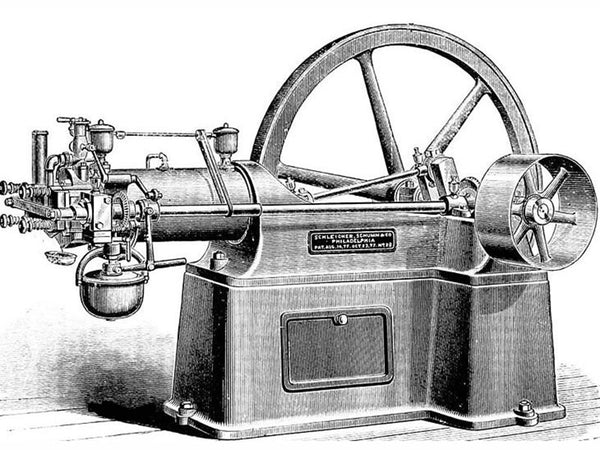
Pictured: Internal combustion engine
In 1879, Benz successfully tested a two-stroke experimental engine for the first time. In 1885, Benz built a four-stroke, single-cylinder gasoline engine, and in the same year he built the first gasoline motor-driven three-wheeler, which is recognized as the first automobile. In 1887, Benz sold his first car to Frenchman Emile Rogers, the sale of the world's first modern car. In the same year, Benz founded the world's first automobile manufacturing company, the Mercedes-Benz car company.
Benz's three-wheeled vehicle uses a two-stroke, single-cylinder, 0.9-horsepower gasoline engine with spark ignition, water cooling, steel tube frame, leaf spring suspension, rear-wheel drive, front-wheel steering, and brake handles Some basic features of modern cars. In 1994, the car was transported to Beijing "International Family Car Symposium and Exhibition" with a high insurance price of 100 million marks. It is now in the Museum of Science and Technology in Munich, Germany.
In 1897, Bosch was the first to apply a magneto ignition device to an automobile engine, which greatly improved the working efficiency and performance of the engine. The magneto ignition device is a spark plug with electrodes installed in the cylinder combustion chamber, powered by a permanent magnet micro-generator, and the coil is periodically disconnected through a circuit breaker to generate high-voltage sparks to ignite the mixture. Because of its high efficiency and reliable performance, the Ford Model T uses a magneto ignition.
In 1903, Ford founded the Ford Motor Company in Detroit, the United States, and in 1908 produced the Model T, the world's first car belonging to ordinary people. In 1913, Ford Motor Company developed the world's first assembly line, bringing the total output of Model T cars to 15 million, creating a world record that has not been broken yet, and the world's automotive industrial revolution also began. The price of gasoline-powered cars has fallen since Ford rolled out the Model T on the assembly line. When the Model T first came out in 1908, the "peasant" car was originally priced at just $850 because it didn't have any extras for beauty and comfort. In 1913, electric cars generally cost about $1,000 more than gasoline cars. After assembly line production, the price of the Model T had dropped to $360 by 1916, and to $240 by 1925. Under the constant impact of such cheap public vehicles, high-priced electric vehicles obviously have no place to live. Later generations honored Ford as "the man who put wheels on the world".
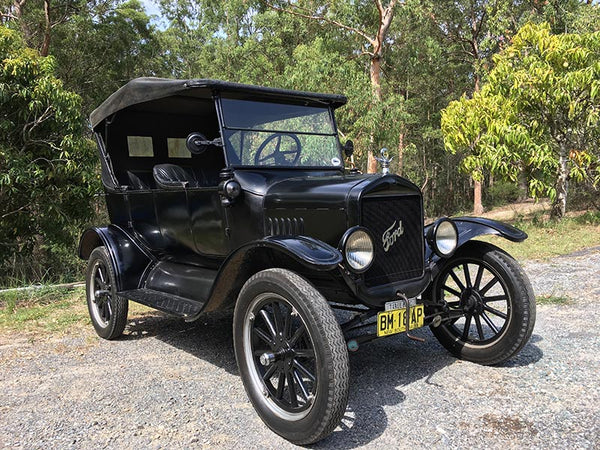
Pictured: Ford Model T
At the beginning of the 20th century, gasoline vehicles developed rapidly, and gasoline prices also fell. Taking the United States as an example, the number of gasoline vehicles in the United States is increasing day by day. In 1906, the number of gasoline vehicles exceeded 100,000, which was higher than the peak of the number of electric vehicles in 1912. The market share of electric vehicles has gradually declined, and companies operating in the electric vehicle business have also begun to decline.
In 1906, the Baker Locomotive Company also produced 800 electric cars, making it the largest electric car manufacturer at the time. In 1907, the company had 17 models. After 1913, the Baker Locomotive Company struggled with competition from internal combustion engines. In 1916, after the last electric cars were produced, the company's electric industrial truck production continued for several years. After that, Baker Locomotive Company mainly produced electric scooters and motors, and later developed into a large-scale cargo handling equipment production company. Although Baker has survived, it has moved away from personal electric vehicles and is limited to the production of special electric vehicles.
Anderson Electric Motors peaked around 1910, producing about 1,000 to 2,000 electric cars a year. In 1919, the Anderson Electric Motor Company changed its name to "Detroit Electric Company," but its boom didn't last long. With the continuous impact of internal combustion engine vehicles, sales of its electric vehicles began to gradually decline. In 1929, the Wall Street stock market crashed in the United States, and the subsequent economic crisis forced Detroit Electric to produce only to sporadic orders. During this period, Detroit Electric, facing adversity, still struggled to launch a few new models, but the production was very small. Detroit Electric produced its last cars around 1939, and has since stopped making electric vehicles.
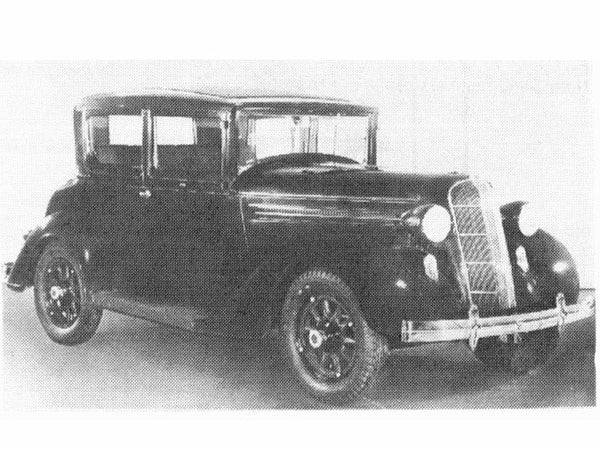
Pictured: Detroit Electric's first 1937 model
The electric vehicle company, once one of the leaders in the U.S. electric-vehicle industry, struggled to maintain the electric-vehicle business by competing with gasoline-car makers on the basis of its Selden patents. In 1911, the Electric Vehicle Company lost a protracted lawsuit over the Selden patent dispute to the Ford Motor Company, and has since languished.
Selden, a lawyer in Rochester, N.Y., first applied for a patent for a road vehicle he designed in 1879, and over the next 15 years he continued to tinker with his design, and the patent application was delayed. At the same time, the nascent American auto industry gradually took shape and started. By November 1895, Selden was finally granted a patent for "a road locomotive powered by an engine in the form of internal combustion of liquefied hydrocarbons," covering all such designs onwards since 1879 vehicles of this design, backwards including vehicles of this design produced or sold before 1912. In 1899 Selden licensed the patent to the Electric Vehicle Company for cash receipts and a percentage of all company royalties. After that, electric vehicle companies began to file lawsuits against major American automakers in a step-by-step manner. Unwilling to pay the tax, the Ford Motor Company was sued in 1903. Ford, in its defense, took advantage of a gap in the patent that the Selden patent was only binding on the two-stroke Brayton engine, while the automaker at the time was already using the four-stroke Otto engine. Finally, after eight long years of litigation, the court ruled in favor of Ford Motor Company. Since then, the auto industry has been freed from the shackles of Selden's patents.
Electric cars in the U.S. are on the decline, and electric cars in Europe are struggling. The Bersey Electric Taxi Company in London, England, did not last long, and it ceased operations in 1899. Then in 1903, petrol taxis began to appear on the streets of London, England. The Frenchman Darlac's car company was an early producer of electric cars. In 1900, it produced the first internal combustion engine car. Dalak Motors has since turned to the production of internal combustion engine vehicles. German Poscher was employed by an Austrian Daimler company in 1906 and designed the famous Mercedes-Electrique-Mixte hybrid model. After that, he also withdrew from the study of electric vehicles and focused on internal combustion engine vehicles. superior. Although the electric vehicle business in continental Europe has not disappeared and is moving forward, it can be said that at the beginning of the 20th century, when electric vehicles in the United States were still in the golden years of continuous excellence, Europe has already aimed its main development direction at gasoline-powered vehicles. , electric vehicles entered a dormant period early in Europe.

Pictured: The milk-delivery electric car produced by W&E
After the 1930s, civilian electric vehicles temporarily withdrew from the stage of history. But electric vehicles in the UK have found a place in the delivery of dairy products. Beginning in 1950, W&E produced 16,000 rear-wheel-drive, 2,500-pound electric delivery vans with a range of 20 miles and 200 intermediate stops, most of which were still in use until 1980. It can be said that electric vehicles in the special field barely maintained the development of electric vehicles in this period.